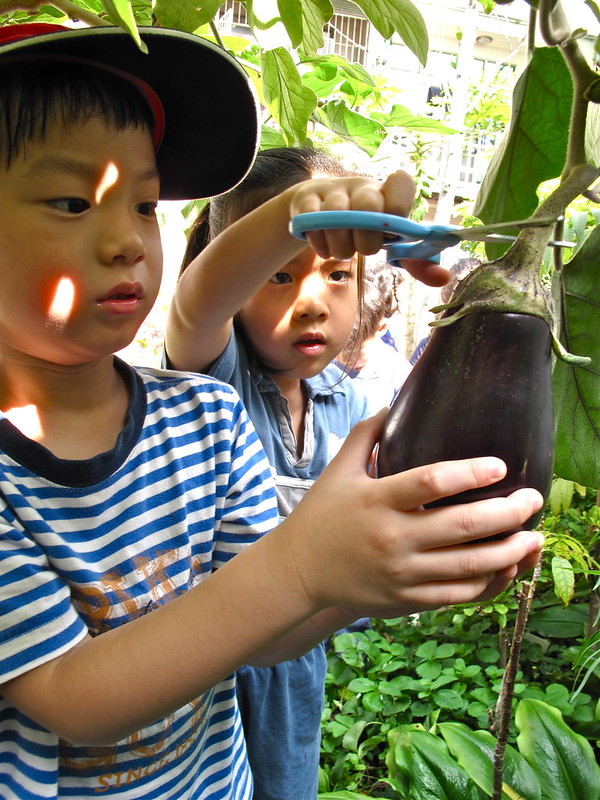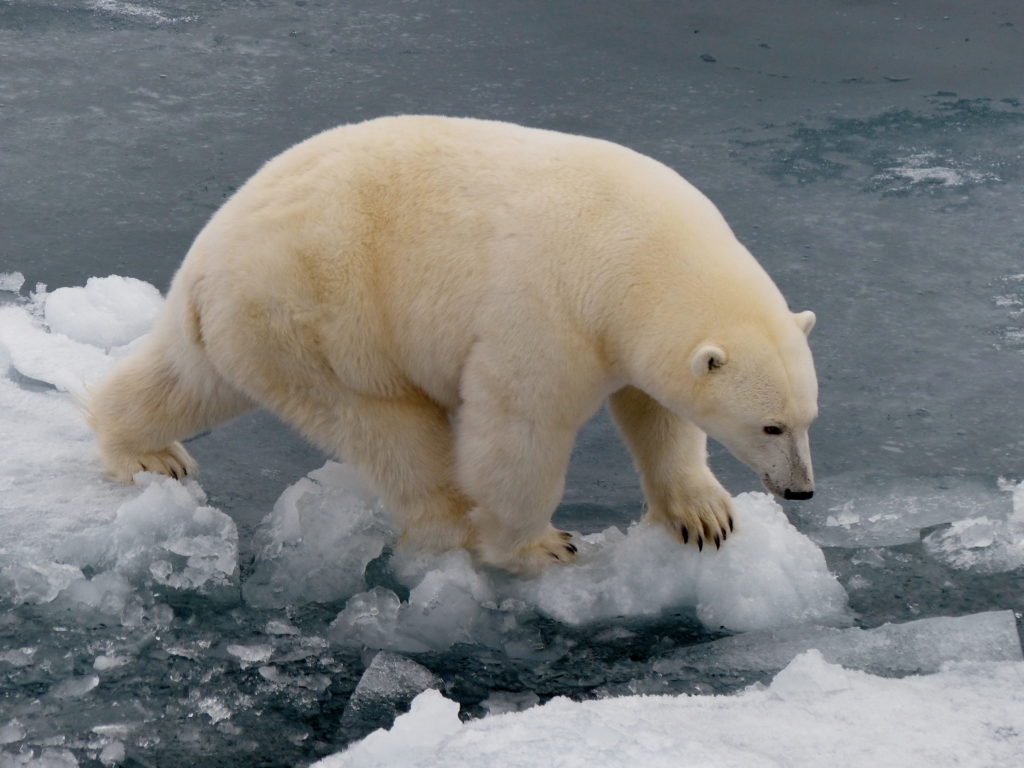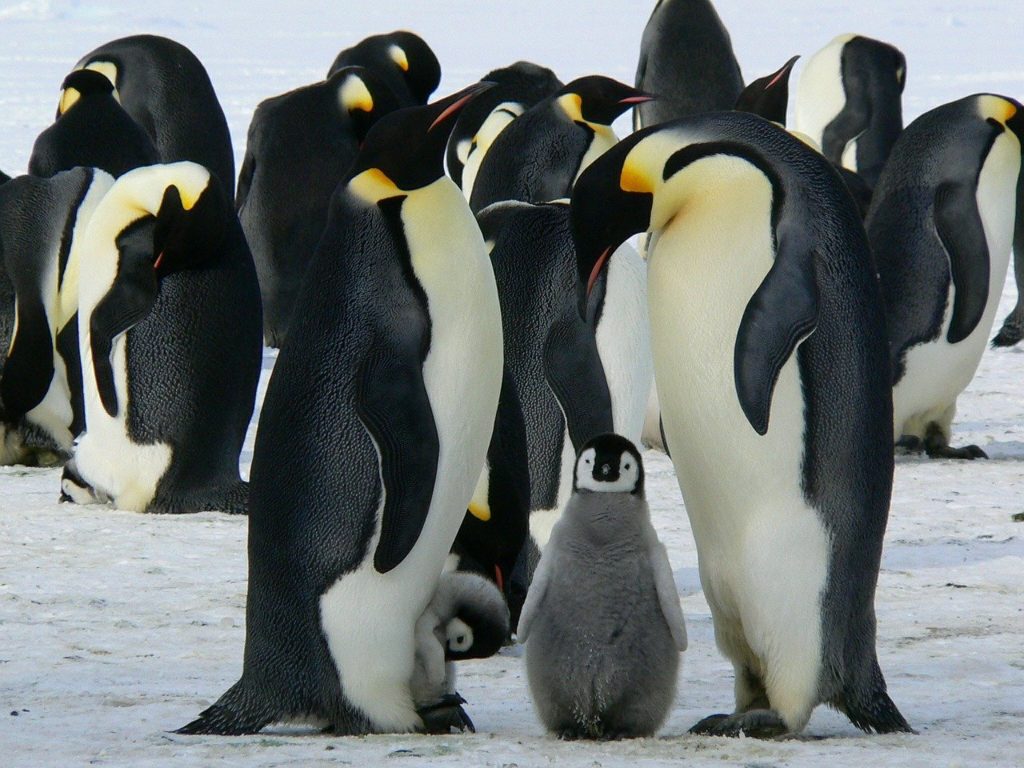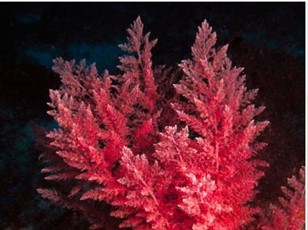Menu
Many people are worried and frustrated about climate change and want to know what they can do to help. Studying the impacts of climate change and rising ocean temperatures on the Great Barrier Reef over the last decade has certainly convinced me that this is the most serious issue of our time.
We hear quite a lot about what we can do in our own lives to reduce the carbon emissions into the atmosphere that drive climate change. Anything that lowers energy consumption helps reduce the need to burn fossil fuels and gives us time to transition to renewable energy sources such as wind and solar. For example, driving less by walking, riding or taking public transport where we can. Even what you eat makes a big difference (so maybe limit ‘BBQ Meatlovers’ to special occasions). We can go a step further and help remove carbon from the atmosphere by growing trees. The reason that Tasmania is currently removing more carbon from the atmosphere than it puts in (i.e. better than net zero emissions) is the natural regrowth of Tasmanian forests.

One thing that I also like to do is avoid unnecessary generation of methane, which is much more potent than carbon dioxide as a greenhouse gas and responsible for more than 30% of the global temperature increase. If you dispose of food and garden waste with your garbage, it will be buried and breakdown without oxygen (anaerobic process) to produce methane that eventually escapes into the atmosphere. However, if you put organic waste into your home compost or council compost bin, microbes can access oxygen when breaking it down (aerobic process) thereby producing very little methane as well as compost that will help grow new carbon absorbing plants.
Finally, we should all try to stay informed and express our views on what actions need to be taken. Students currently in college will be the ones asked to deal with the largest consequences of climate change. You’re entitled to have a say.
Climate change can directly affect animals: for example, if they are used to particular temperatures and things get warmer, if they can’t move (like corals) then things can get very uncomfortable, and you have probably heard about bleaching events on the Great Barrier Reef.
If they can move, they might be able to move into other areas – shift their natural range – like sea urchins coming down from coastal Australian waters along the east coast of Tasmania. Another example is temperate species moving into polar regions, and this is being seen in North Atlantic fishes (like mackerel) expanding into the Arctic. But the ranges of polar species like Arctic cod are getting smaller which is important for all those marine mammals that like to eat this fatty fish.
Climate change can make really big changes to key habitats: the place where animals live. This is most obvious in icy places – the Arctic and Antarctic. One animal everyone thinks is very special is the polar bear. Changes in the timing, duration and thickness of Arctic sea ice and snow are linked to changes in where they are living, where they make their dens for pupping, where they forage and what they’re eating, as well as how far they have to swim (instead of travelling over ice). Some populations are declining but others are doing okay.

In the Antarctic, the famous Emperor penguins breed and raise their chicks on the fast ice, which is stable sea ice that is attached to land. If sea ice breaks up too early, they lose their chicks, so they are really vulnerable to sea ice loss with climate change without major cuts in carbon pollution. Their situation is spearheading an urgent call for stronger climate action and protections for these penguins. If nations meet the Paris Climate Agreement’s 1.5 degrees Celsius target, the penguins’ population should stabilize by 2100.

Different patterns are being seen in different penguin species – for example on the Antarctic Peninsula the gentoo penguins has increased its population size and expanded the area it occupies over the last 20 years.
Climate change can also alter weather patterns – for example, making intense storms more frequent – more rainfall which can affect say shy albatross trying to raise their chicks on their breeding islands in Bass Straight north of Tasmania. These birds build nests out of mud and plant material, and bad conditions affect if chicks survive. Scientist are trying to help with supplying special concrete and mudbrick nests.
So, we can see from these examples that some animals might be colonising new areas while other species are losing out. The more we can limit climate change impacts the more we can help those species that have evolved really special life cycles to thrive in their natural environments.
While we have worked as a society to reduce pollution in general, in more recent times there has been a focus on problems caused by plastic pollution. As fossil fuels are the building blocks for most of our plastics, reducing our use of plastics or finding alternatives is a significant goal.
The solution for this really must be elimination of fossil fuel-based plastics and substitution with sustainable alternatives. You have probably already heard of some of these such as bio plastics or biodegradable plastics and this can mean many things. In some instances, bio-plastics or renewable plastics could mean that they come from a renewable source and that it may also break down faster to harmless materials in the environment or through composting. Ideally, we need to replace the raw materials for these products that are currently sourced from fossil fuels to truly renewable materials. This is work being done by chemists to take natural polymers such as corn starch and cellulose and convert them into usable plastic substitutes. This can also have problems as it may divert arable land away from food production.
There is the potential for the next generation of packaging materials to be derived from seaweeds which can be grown in a sustainable manner without extra inputs such as fertilisers etc. as with land-based crops or biomass.
I think at this moment we are at the start of this race and there will be significant advances within the next 5 years which will have many beneficial effects on society but as a society we also need to play a major role in this transition.

The biggest contributors to climate change are greenhouse gas emissions, primarily carbon dioxide (CO2), methane (CH4), and nitrous oxide (N2O), which trap heat in the Earth's atmosphere, leading to global warming. The levels of these gases is now higher than ever before in human history (800,000 years) is because we burn fossil fuels like coal, have cleared forests, and from farming. All these things have helped make our lives more comfortable – but we have done too much and now need to reduce our impact on the planet if we want to reduce climate change.
The burning of fossil fuels for energy production, including coal, oil, and natural gas, is a major contributor to CO2 emissions. To reduce this, we can transition to cleaner energy sources - often called renewable energy (solar, wind, and hydro).
Clearing of forests (deforestation) for agriculture and development contributes to both CO2 emissions and reduced carbon uptake as part of photosynthesis. We can combat this by protecting forests, implementing sustainable land use practices, and reforestation.
Agricultural activities release methane and nitrous oxide, mainly from livestock digestion and manure management. More sustainable agriculture practices, such as reducing meat consumption, improving livestock management, and using low-emission fertilizers, can help.
The transportation sector is a significant source of CO2 emissions. Transitioning to electric vehicles, improving fuel efficiency, and investing in public transportation can reduce emissions. Landfills emit methane due to the decomposition of organic waste. Reducing waste through recycling and composting and capturing methane from landfills can help reduce emissions.
Stopping climate change requires a multi-faceted approach that combines policy changes, technological advances, and individual efforts. The best alternatives depend on the specific sector and the region, but a combination of renewable energy, energy efficiency, sustainable land use, and responsible waste management are key components of climate change mitigation.
Let me answer this question across the three levels of government – local, state and national (federal).
While local governments can’t influence national climate policy, they do some important things at the local level, like promoting green building design, installing busways and bikeways and improving public transport to encourage a move away from private vehicle use. They are also responsible for approving new coal mines, although in some states their ability to reject proposed new mines is limited by state-level law.
State governments can provide incentives to industry to change their industrial processes and energy inputs, or make laws actually requiring them to do so. Some state governments offer incentives for people to instal solar panels or energy efficient appliances and could use the car registration system to encourage people to buy electric vehicles.
However, consistent and coherent climate policy really rests with the federal government. The national government has laws requiring a mandatory amount of renewable energy as part of every electricity companies supply. There are also laws relating to energy efficiency. The main plank of the Federal government’s climate policy is the Carbon Solutions Fund. This involves paying individuals and businesses to undertake activities that will reduce emissions. The government initiates a reverse auction in which it invites people to indicate how many emissions reductions they could deliver, at what price. The government then buys those emissions reduction from the party offering to do so at the lowest price. This might achieve small level of emissions reduction, but it costs a lot of money and it will not deliver the kind of transformation that is desperately needed. It provides no incentive for large emitters to reduce their emissions because there are no legal obligations for them to do so and there are no costs associated with continuing with high emitting activities.
The national government could also stop new coal mines by using federal environmental laws. So far it has not done so. In fact, three new coal mines have been approved by the Commonwealth environment minister in the last two months. The Australian government has said that because this coal is intended for export and not domestic consumption, it is not Australia's responsibility to discontinue mining. The responsibility for the emissions coming from burning this coal, according to the government, should rest with the countries that buy the coal. While this may be true in a technical sense based on international carbon accounting rules, it is a missed opportunity in terms of Australia’s leadership on climate action.
Tasmania, an island state of southern Australia, is home to various unique and important species. While there isn't a comprehensive list of keystone species specifically identified for Tasmania, several species are considered ecologically significant and could be significantly affected by climate change, such as:
If any of these species were to considerably decline or go extinct due to climate change or other pressures, the consequences could be significant, for example:
Preserving these keystone species and their habitats is crucial to maintaining the health and balance of Tasmania's ecosystems. Efforts in conservation, habitat protection, and climate change mitigation are vital to prevent the loss of these important species and their potential extinction
The main things we need to know about climate change are actually quite straightforward. We need to know that:
We have linked the points above to other answers from the Curious Climate Schools experts so you can read more.
This is a great question and a really important one, because if we can understand what the main threats of climate change are, we can do something about them! The first thing to understand is that we are talking about anthropogenic climate change. This refers to climatic changes caused by human activities (anthropocentric meaning human). Climate change is ultimately caused by releasing greenhouse gases into the atmosphere which contributes to global warming. You can find some great information about greenhouse gases, global warming and their relationship with climate change from Dr Beth Fulton and Deniz Yildiz.
Threats are, therefore, activities that contribute greenhouse gases to the atmosphere. The biggest threat and production of greenhouse gas emissions is our use of fossil fuels. Fossil fuels are hydrocarbon-containing materials, such as coal, petrol and natural gas, formed underground from the remains of dead plants and animals a long, long time ago that humans extract to use for things like generating electricity, driving cars and machinery.
Another major threat is deforestation which is the cutting down and often burning of forests, such as the Amazon rainforest, and also forests here in Tasmania.

Intensive agriculture contributes significantly to the release of greenhouse gases to the atmosphere as well. Cows and sheep produce large amounts of methane (a greenhouse gas) when they digest their food, and this gas adds to the greenhouse effect on the Earth. Furthermore, animals need fields to graze on, and this leads to deforestation.
The use of nitrogen fertilisers to support intensive agriculture is another contributor to climate change because they produce nitrous oxide emissions.
Last, but by no means least, fluorinated gases contribute to greenhouse gas emissions. These particularly damaging gases are emitted from equipment and products such as commercial and industrial refrigerators, air-conditioning systems and heat pumps. Such emissions have a very strong warming effect, up to 23,000 times greater than that of carbon dioxide.
What is important to remember though is that there is great work being done to combat ALL of these threats.
Broadly speaking, many of the climate impacts that we are seeing in Australia are also happening in other parts of the world, but there are plenty of examples of how they uniquely affect Australians and our unique plant and animal life. We have seen, and will continue to see, average air and ocean temperatures rise and also extreme events occur more regularly. Extreme events include things like droughts, floods, cyclones, bushfires and heatwaves that occur both on land and in the ocean. We don’t have to go too far back to remember the 2019-2020 bushfires that burned across much of Australia. This had devastating effects on communities, but also burnt some areas of very old forest. These are not likely to recover in our lifetime and contained tree species that are both rare and unique to Australia. The bushfires also had an impact on our iconic wildlife, both directly and by destroying large tracts of habitat for koalas, in particular.
We have also seen a number of marine heatwaves in recent years, where ocean temperatures are very much higher than usual for weeks to months. One of the most widely known Australian impacts of these heatwaves is the bleaching of corals on the Great Barrier Reef. The Great Barrier Reef is unique because it is the largest coral reef system on earth and contains an incredible diversity of marine species. When corals bleach they lose the tiny organisms, called zooxanthellae, that live inside them and provide them with energy. Sometimes corals can recover if temperatures cool again quickly enough, but repeated high temperatures and bleaching causes them great stress. Scientists are looking at ways to grow and transplant the most resilient corals and managers are working to reduce other factors that stress corals, such as increased nutrients and pollution from land, to give corals on the Great Barrier Reef the best chance of survival. Of course, the most important thing that we can do as a society to change the path that we are on and lessen the negative impacts of climate change is to reduce CO2 emissions as soon as possible. While this is a global challenge, we all have our small part to play.
There will be a variety of Impacts that are unique to Australia, The Aboriginal people of Australia are made up of 64 plus nations, most of these have 10 dialects of language and have an even greater variety of lore’s. These lore’s have served and guided the Aboriginal people for over 60000 years. They have protected the mother earth and all its inhabitants so that there is a symbiotic or mutually beneficial relationship. These cultures rely on cultural resources to engage in all aspects of their traditional cultural processes, which include among many items hunting resources, food and cooking resources, mental health, and wellbeing through the practice of culture itself, healthy diets, food resources, ancient customs all of which will severely be strained by climate change impacts.
Aboriginal people’s connection to country has helped with the micro-observations of climate change effects. Scientists from across the globe have had academic papers, conferences, and meetings with the regional indigenous peoples. The local unique impacts are those that effect all levels of Aboriginal traditional culture, starting with the changes in migration patterns of fish and birds. The endemic species climate self-adaptations means that some species of fish are being found in Tasmanian waters that have never been seen before because our waters are warming. The Torres Strait peoples islands both physically and spiritually are slowly being absorbed into the sea, and in doing so, the sea is exposing and washing away ancestral burial grounds. They are among the first people to become climate refugees, new laws of governance on the international level have had to be created and observed as these lands sink or are washed away, an understand has been drawn up so that when these lands reappear that the Torres Strait islander forward generations are protected and that this treaty of kinship internationally recognised as being owned by the Torres Strait peoples, clans and family groups. As always, the Torres Strait people will also record these things in song lines.
This is just a small sample of the negative impacts that are and will impact the land called Australia.

Climate change has many different parts to it and scientists have come up with lots of very promising ways to slow down global warming. Here is one super interesting solution that comes from the oceans.
Have you ever thought about seaweed? It isn’t just smelly stuff that builds up on some beaches, it’s an amazing marine plant that can help us tackle global warming! Seaweeds are plant-like organisms, which mostly live attached to rock in coastal areas. There are many different kinds of seaweeds, from fine delicate red seaweeds (phylum Rhodophyta) like asparagopsis , delicious and nutritious green seaweeds (phylum Chlorophyta) like ulva (which is also known as sea lettuce) to brown seaweeds (phylum Ochrophyta), like kelp. They also range in size from microalgae through the huge bull kelp macroalgaes.
Humans have been eating and using seaweeds for a very long time. Seaweed was a staple food in Japan, Korea and China since at least 600BC. The Icelandic sagas, written in the 10th century, also refer to dulse, a type of red seaweed, as a food. Special seaweed molecules call polysaccharides from red and brown algae are used in all sorts of human foods to help ingredients combine (emulsify) and as a thickener. These are even used in ice cream and toothpaste – next time you clean your teeth check the ingredient list for carrageenan – that’s derived from seaweeds.
But what about as a solution for climate change? To understand seaweed as a solution for climate change, we need to think about cow farts. Seriously, cows release a huge amount of methane into the atmosphere. Methane is one of the main greenhouse gases responsible for global warming and climate change. Cows produce a lot of methane. Just 1 cow can produce up to 120kg of methane in its lifetime, and there are about 1.5 billion cattle world word – that is a lot of cow farts.
Scientists at the CSIRO have worked out that just a small amount of dried asparagopsis (a red seaweed) fed to cattle can reduce their methane output by as much as 80%. Scientists have been working on this for a long time, but it is showing huge promise for stopping one source of methane getting into the atmosphere.
So the science is in and now companies are starting to invest in farming asparagopsis, and making feed additives for cattle.

Climate change mitigations have started, we have been working towards them for over 20 years. The reports from the worlds scientific body say that there are severe outcomes if we don’t change current practices. Climate change will get worse before it gets better. However, the people most qualified to help guide scientist, and in turn the world, are the indigenous peoples, who have survived multiple ice ages in isolation, who’s song lines and ancient histories and deeply connected cultures treat the earth as a sacred sentient being that is to be treated respectfully and with honour.
The turning point for climate change is when ‘white’ colonial society see’s the earth not as a resource, instead these so-called civilisations need to have a treaty with the people who are the guardians of the planet. When we cease to treat the earth as a resource, when we recognise humans as people and not consumers, when we see that corporations are not sentient entities - then we will begin to win the climate mitigation battle at a pace conducive to healing mother earth by slowing the effects of western human anthropocentric induced climate change.
The fact that entire pacific nations will disappear, that the artic ice cap will disappear which is a staggering issue as new sea shipping lanes are created, new international boundaries are created and the changes in endemic migrations, nurseries, and spawning grounds. One of the most high-profile examples of climate migration is the creation of the grizzly-polar bear hybrid, as the ice shrink and drives polar bears south and the warming waters means grizzlies head further north as salmon now spawn in rivers that were previously inaccessible, the result is the two bear species meeting and procreating. Things are changing, is it fast enough for mitigation to occur, I’m not sure, but at least now there are changes and humanity are agreed that a real pathway needs to be locked in.
The most significant thing that we are doing that makes climate change worse is failing to reduce CO2 emissions. We could also do a better job of planning for the future. This would include building more energy efficient houses, taking account of climate change when we decide where to place new infrastructure, and focussing on renewable energy.
Planning for climate change is a large international challenge. The global community could work towards the goal of doing something about climate change if its attention was not distracted by wars, pandemics and economic crises.
But also, individual action is really important. In my own life, I focus on trying to live more sustainably, by riding my bike to work, installing solar in our house, composting, eating mostly vegetarian meals, driving less and owning a hybrid car (and one day an electric car).